Por: Jorge Huerta “El Lobo Dj”
La Cenicienta con el Moscow State Ballet ruso se presentó con gran éxito en Puebla, México este 2 de julio, teniendo como escenario el Auditorio del Complejo Cultural Universitario, con el virtuosismo de las bailarinas y bailarines, un equipo total de 32 personas 2 de ellos son los técnicos de luces y sonido, los 30 restantes salen en escena. La Dirección Artística es de Liudmila Titova, música de Sergei Prokofiev, coreografía: Marius Petipa, Enrico Cecchetti y Lev Ivanov.
Elenco:
*Cenicienta (Cinderella); Liudmila Titova, (alterna funciones Timirova Dina)
*Príncipe, Sergey Skvortsov, (alterna funciones Alexey Konkin)
*Hada Madrina, O. Doronina
*Profesor de Baile, V.Bezin, A.Salimov
*Madrastra, F.Kokh, V.Bezin
*Hermanastras; D.Bulmaga, N.Nechaev
La obra está conformada por 2 actos con un intermedio de 15 minutos. El Ballet trae un total de 6 telones artísticamente pintados, 3 bambalinas y 3 piernes. Los telones se van presentado de forma siguiente:
Primer Acto:
– Telón 1: Arco y Cortinas de la Casa
– Telón 2: Chimenea Casa
– Telón 3: Vitral
Segundo Acto:
– Telón 4: Reloj
– Telón 5: Escena Árabe
– Telón 6: Escena Española
Datos de El Moscow State Ballet
El Moscow State Ballet creado en 1997, goza de una trayectoria y un lugar privilegiado entre las compañías de ballet ruso y su repertorio incluye ballets clásicos de la herencia rusa y también obras de producciones contemporáneas.
La compañía de ballet se nutre de egresados de las mejores escuelas de ballet de Rusia, este énfasis en la formación clásica se traduce en la excelente interpretación dramática que les caracteriza; a La Cenicienta, le preceden varias producciones célebres por la elegancia, la belleza y la clase con la que son interpretadas, como por ejemplo El Cascanueces, La bella durmiente ó Giselle, que han sido llevadas a escenarios de todo el mundo por esta compañía con gran éxito.
Así el Moscow State Ballet ha sido visto por el público en muchas ciudades de Italia, Alemania, Canadá, Suiza, Austria, Inglaterra, España, Portugal, Grecia, Dinamarca, Suecia, Luxemburgo, Estados Unidos, Rumania, China, Francia, Japón, Finlandia, Sudáfrica, Kenia, Tanzania, Zambia, Botswana, México, India, Kazajstán, Vietnam, Israel, Marruecos, Sri Lanka, El Salvador, Guatemala, Costa Rica, Emiratos Árabes Unidos y otros más. La compañía colabora con artistas de diversos teatros, incluyendo el Bolshoi, Mariinsky, Stanislavsky, Nemirovich Danchenko y San Petersburgo.
Basado en las grandes tradiciones del ballet clásico ruso, esta compañía crea espectáculos de alta calidad artística con un toque de alegría y belleza espiritual que logra tocar el alma del público.
Estrenada el 21 de Noviembre de 1945 en el Teatro Bolshoi de Moscú La Cenicienta, fue inicialmente estrenada el 26 de marzo de 1822 en el King´s Theatre de Londres, basada en el cuento de Charles Perrault con un libreto de Albert Decomte y música de Fernando Sor. En 1945 fue retomada por los rusos y reestrenada con la música de Serguei Prokofiev, la coreografía de Zakharov y la primera bailarina Olga Lepescinskaia en el Teatro Bolshoi de Moscú, al terminar la segunda guerra mundial. La partitura de Prokofiev para este ballet casi siempre ha dejado confundidos a los coreógrafos y críticos quienes se preguntan cómo una partitura tan sofisticada y sarcástica puede guiar un cuento de hadas. La Cenicienta, basada en el cuento clásico de Perrault, originalmente llamada “Cendrillon ou la petite pantoufle de verre” (Cenicienta o la pequeña zapatilla de cristal), se divide en 3 actos con música de Sergei Prokofiev, quien comenzó componiendo la música en tiempos de guerra en la vieja Europa. Transcurridos varios años, con las tropas alemanas lejos de Rusia, retomó el trabajo en los Urales, donde se encontraba el Ballet Kirov. El propio autor quien mencionara: “es importante que La Cenicienta sea lo más danzable posible; la compuse sobre tradicionales esquemas del ballet clásico, para expresar en la música toda la poesía del amor entre la Cenicienta y el Príncipe”.
Sinopsis en Inglés:
Cinderella is a beautiful fairytale about love, fortunate fate and the triumph of good. This Perreault fairytale has been performed in the theatre under various names: “The Crystal Slipper”, “The Magic Slipper”, “The Squirrel Fur Slipper”, “Cendrillion”, and finally, “Cinderella”. In fact, it was already being staged as a ballet in the 18th century.
“Cinderella’s” author lived in the 17th century. He was the author of many tales beloved throughout the world, including “Sleeping Beauty”, “Puss in Boots”, and “Bluebeard”.
Over the years, the poetic charm of the Cinderella tale has captivated the imagination of directors and composers. Tonight’s music was written by Russian composer Sergei Prokofiev immediately after World War II; as enchanting, tender and fragile as Cinderella herself, to which choreographer Rostislav Zakharov created his ballet.
Poor Cinderella has an evil, carping stepmother and two nasty stepsisters, Zliuka and Krivliaka. All the Stepmother’s love and care are bestowed on the sisters, while Cinderella only gets reproaches. One day, Zliuka and Krivliaka fight over a scarf they’ve embroidered together. The Stepmother intervenes and divides it in half, but instead of scolding her daughters, she takes pleasure in watching them dance with the halves of the unfortunate scarf. Cinderella and her good, beloved but spineless father can only watch.
Between chores Cinderella rushes in to see her father but the stepmother and sisters won’t let them spend any time together. When an old woman enters the house only Cinderella tenderly offers her a crust of bread.
The srepmother and sisters have other concerns. They are getting ready for a fancy dress ball at the palace. The entire house is filled with tailors and dressmakers, a dancing master tries to teach the clumsy sisters to dance. They won’t be taking Cinderella to the ball, she doesn’t have a dress. After she is left alone, she mournfully but perfectly repeats the steps the dancing master was attempting to teach.
Suddenly, the old woman reappears, but as a powerful fairy promising to help Cinderella attend the ball. Cinderella gazes sadly at her tattered dress and shoes but the room lights up with the fairies of Spring, Summer, Autumn and Winter, each with a piece of finery for her. As she hurries to the ball, the fairy calls out a warning: on the dot of midnight she must leave and return home.
At the palace, the stepsisters try to impress those around them, especially the Prince, with their dancing. The moment Cinderella enters all eyes are on her. The Prince falls in love the moment he sees her and they dance happily together. As the clock begins to strike, Cinderella remembers the fairy’s instructions. She flees the palace leaving one of her slippers behind. The prince tries to catch her but is left with only the slipper.
The Prince asks everyone for the identity of the beautiful stranger but no one knows her. In despair he sets out to find her.
At last he arrives at the estate where Cinderella lives. All the girls attempt to fit into the shining slipper without success. Suddenly the Prince sees Cinderella reveal the other slipper. Despite the Stepmother’s efforts, Cinderella tries the slipper on and becomes the Prince’s bride.


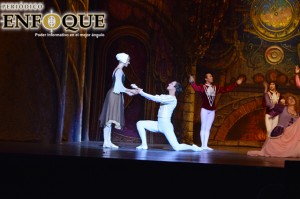
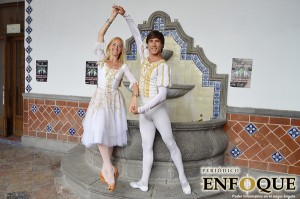
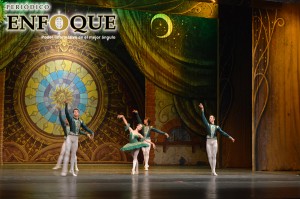
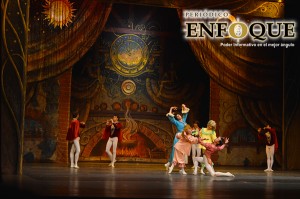
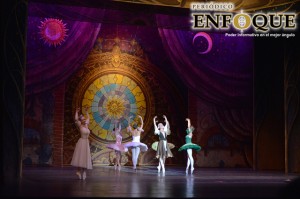
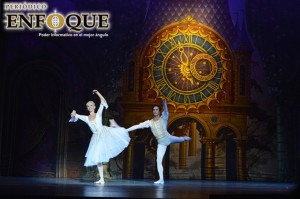
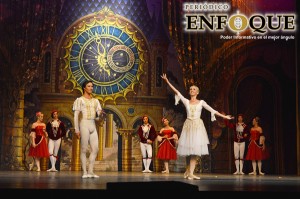
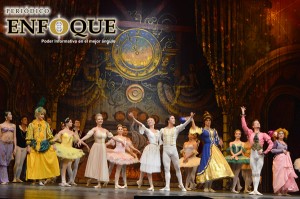
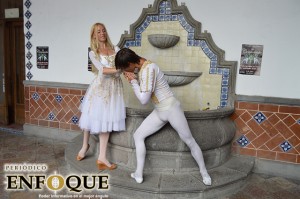
No Comments
Comments for La Cenicienta con el Moscow State Ballet ruso se presentó en Puebla este 2 de julio are now closed.